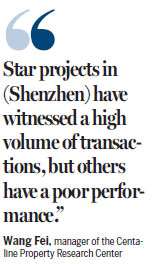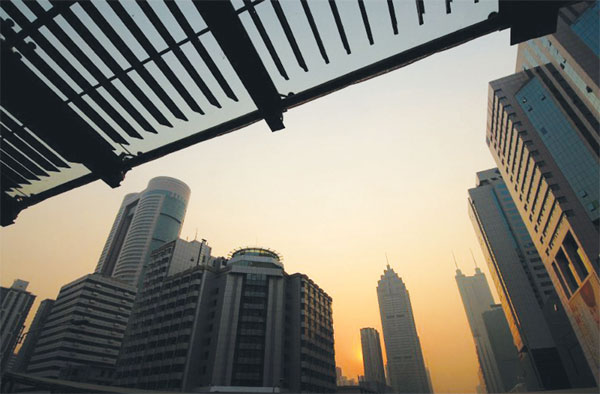Inventories cut to lift property sector
Updated: 2015-12-16 08:07
By Chai Hua in Shenzhen(HK Edition)
|
|||||||
|
A view of Shenzhen's city skyline at sunset. Experts believe that the Shenzhen's property prices will continue to go up next year as the stress of reducing housing inventories will further relax tax policies and interest subsidy to benefit the real-estate market. Asia News Photo |
Shenzhen's property market, it seems, will not be on the wane, with the latest directive from the central leadership to reduce housing inventories to encourage more migrant rural workers to buy homes in cities.
The directive emerged from a key meeting of the Political Bureau of Communist Party of China Central Committee on Monday to discuss its major economic tasks for 2016 - the first year of the country's 13th Five-year Plan (2016-20).
One of the key tasks is to expand effective demand and stabilize the real-estate sector, which has seen homes prices in Shenzhen surge to record levels in the past few months, fueled by limited supplies and further relaxation of purchase curbs.
As to November, about 441 million square meters of commercial and residential buildings were still on sale, accounting for 45 percent of newly started projects from January to November this year, according to GF Securities.
The latest annual strategy report on the real-estate sector released by GF Securities on Tuesday says first-tier cities have been under less pressure to cut housing inventories than second- and third-tier cities, while Shenzhen has the least pressure.

The period required for a city to trim housing inventories averages about 12 to 14 months, but Wang Fei, manager of the Centaline Property Research Center, told China Daily Shenzhen needs only about seven months to do it.
According to housing information provider anjuke.com, Shenzhen's total number of new homes in stock reached 38,419, with 4.11 million square meters, as of the end of November, compared with Shanghai's 11.51 million square meters.
Experts believe Shenzhen's new land entering the market is also among the least on the mainland. In fact, the city has only about one or two pieces of new land on sale each year.
Wang Feng, director of the Shenzhen real-estate research center, agreed that Shenzhen's housing inventories are at a "healthy and reasonable" level, while it is the primary problem for small- and medium-sized cities.
But Wang Fei pointed out that there are some differences at the micro level. "Star projects in the city have witnessed a high volume of transactions, but others have a poor performance," she said.
Jiulongxi Garden - a new project in Shenzhen's emerging Longhua district - had its units snapped up on the first day of sales last Sunday, while sales at other projects entering the market this week have not been so ideal. According to a Centaline report, one such project managed to sell just 30 percent of its flats.
Besides a high transaction rate, Jiulongxi Garden broke the district's price record, reaching 80,000 yuan ($12,377.5) per square meter, with the average price hitting 60,000 yuan.
Wang Fei said homes supply in Longhua has been unable to meet demand in the district, while other districts like Longgang have comparatively large sources. On the first day of sales at Jiulongxi Garden, some 500 buyers snapped up about 180 apartments.
Wang Fei predicts that Shenzhen's property prices will continue to go up next year as the stress of reducing housing inventories will further relax tax policies and interest subsidy to benefit the real-estate market.
grace@chinadailyhk.com
(HK Edition 12/16/2015 page8)
